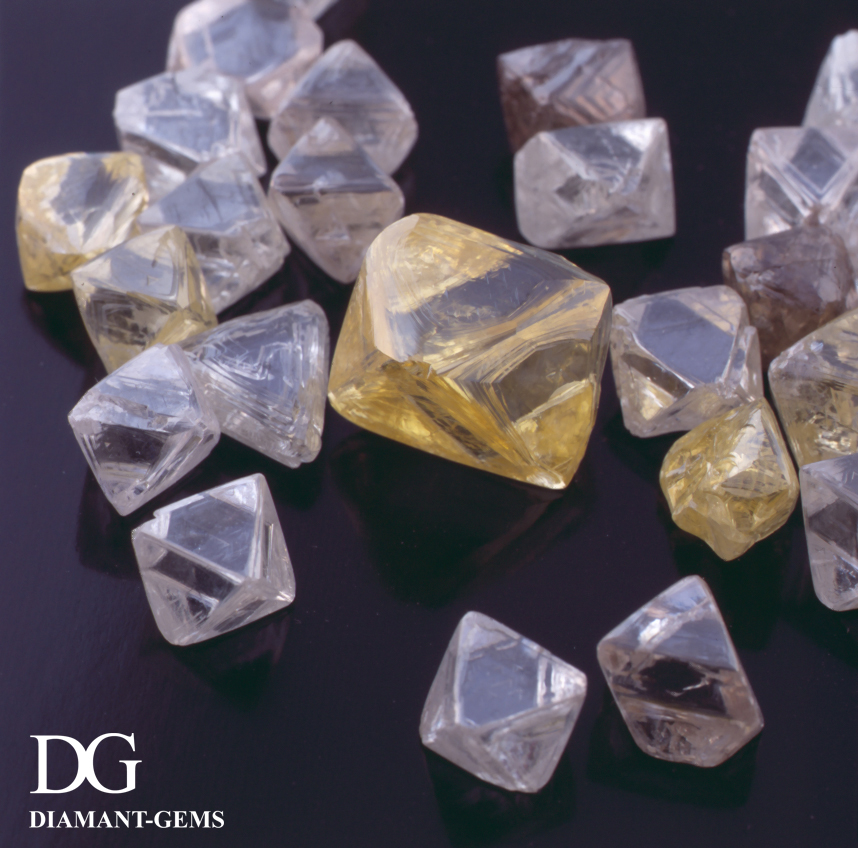African countries, such as Botswana, Angola and the Democratic Republic of Congo, are also involved in the diamond trade in Africa. Of the three countries, only Botswana has a significant primary diamond yield and has three large mines, which are all currently operational.
To the north of the country is the Orapa mine, currently the most profitable kimberlite pipe in the world, producing more than 6,000 million carats of diamonds per year. The Kalahari mine is in southern Botswana. Despite the meaning of its name “place of small stones”, the mine produces roughly 22% of global diamond production in terms of value. Near to the Orapa mine, is the Letlhakane mine, where diamond mining began in 1976. Although the volume of production per year is equal to 1 million carats, 20% of the diamonds are industrial grade and the remaining 80% are gemstone quality.
Diamonds from Angola and the Congo are of alluvial origin. But these mines are plagued by illegal excavations and political instability. There are many kimberlite pipes in Angola that diamond experts consider to be economically viable but the presence of guerrillas has always prevented a true evaluation of these pipes, making it impossible to confirm the estimates.
In the Democratic Republic of Congo, the Miba mine produces 5 or 6 million carats per year, but only 6% of diamonds are of gemstone quality.
The world of gemstones : Central African diamonds
The first Central African diamonds were discovered at the beginning of the First World War. The presence of water in abundance, the dispersion of deposits and relatively cheap labour mean diamond production is still essentially small-scale.
The stones that are found tend to be round-shaped and are white or yellow. Often they are tinged with green on the outside; this is simply due to the uranium ore that surrounds the stone. These diamonds are radioactive, but they can be treated.
Diamond mining is generally seasonal (dry season) and it is estimated that over 30,000 artisans work on the sites. The activity provides income to approximately 300,000 people spread over more than half of the territory.
The CAR is one of the rare countries on the continent to have achieved food self-sufficiency: it also produces coffee, cotton, tobacco, timber, gold, copper, tin, uranium and oil in significant amounts. We strongly believe in future diamond mining opportunities in this geographical area.
The territory is huge: as large as France with a population of 3 million inhabitants, and the country is full of diamonds. The vast rainforest where the pygmies live is still virtually unknown and many diamond veins are yet to be discovered. However, the lack of roads in the jungle and the multitude of tropical viruses make this a particularly difficult area; working conditions are difficult and the risks considerable.
Visit the other African countries !





